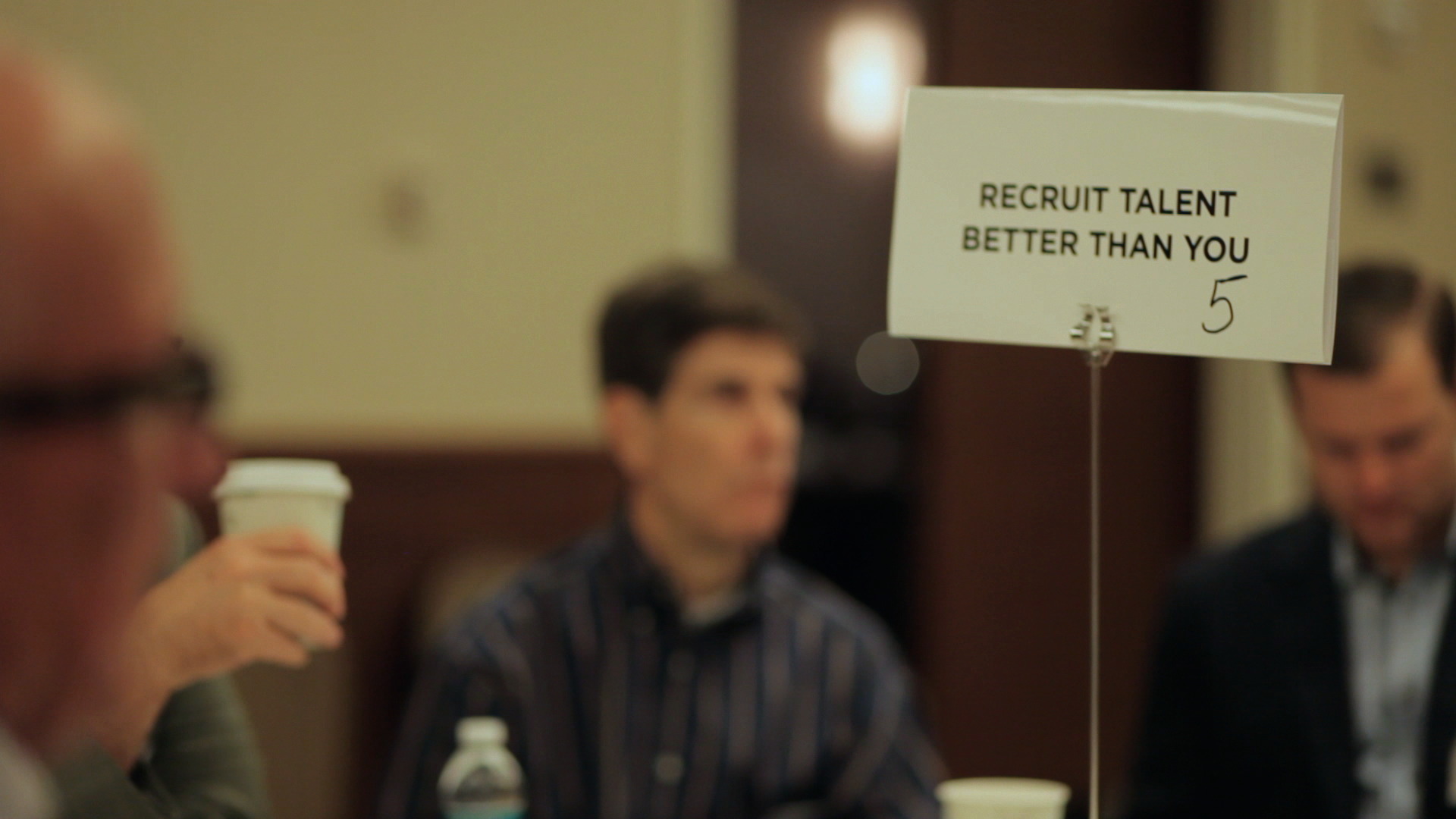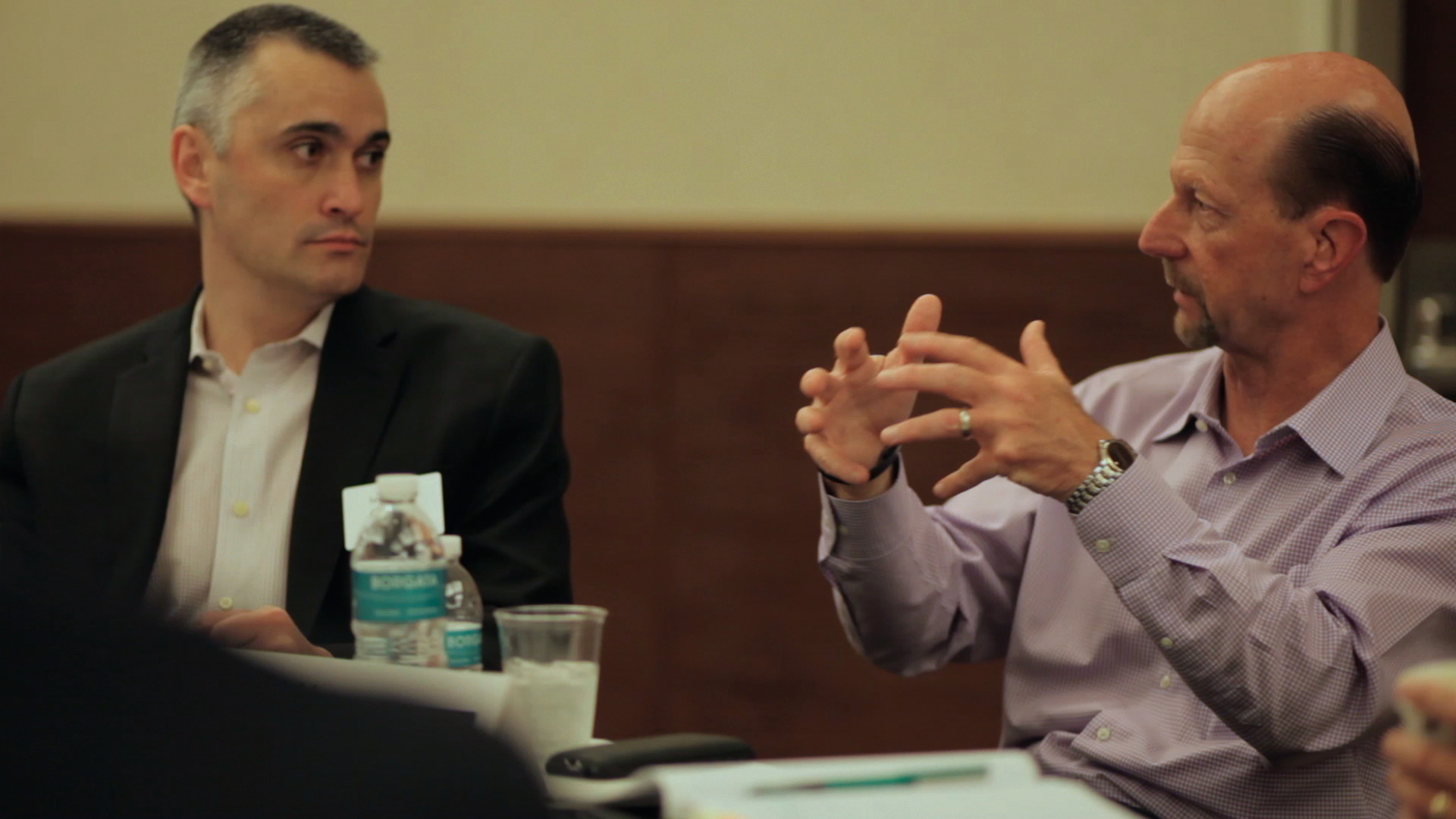Building exceptional teams is a strategic imperative for Edison and our portfolio company CEOs. It’s arguably the single most important driver for a company’s success in accelerating growth, market leadership, differentiation, a scalable business model and ultimately, enterprise value.
This is no secret, yet so many CEOs and executives treat developing management as an afterthought, and not as a consistent, relentless process. They may say it’s important, but few live up to making it a priority.
- Does your company have an actual process that’s persistent? If not, why not?
- Do you know your hiring batting-average and cost of hiring mistakes, just as you know other metrics tracked in your business?
- How do you map organizational gaps and changes to the company’s strategic goals?
- How do you ensure you’re sourcing awesome talent?
- How do you ensure you’re recruiting and hiring the highest performers?
At Edison’s 2014 CEO Summit last month, I moderated peer-group, sausage-making sessions on these topics, led by James Green, CEO of Magnetic and Tim Davenport, former CEO of Best Software, respectively (both are also active members of the Edison Director Network). There were five bottom lines:
- Hiring Process is a Must-Have
The best companies have a defined process that’s proactive, well defined, well understood and adopted by the exec team, all managers and the board. Not surprising, right? Yet, less than 20% of companies tend to have this in place. Hiring processes need to be a constant and tracked in management meetings, not just at board meetings or in annual planning. Additionally, in order to power through and avoid stall-points, the best companies analyze medium and long-term business strategy imperatives and make sure the key players are added ahead of the curve – this is what it means to be proactive. Continuous assessment and preemptive upgrades were also mentioned by the group as key steps to team success. Top CEOs dedicate 20% of their time focused on building strong teams and leading by example -- those that don’t, risk mediocre results.

- Avoid Hiring Mistakes
Data shows that hiring batting-averages across companies are in the 50% range; the same as a coin toss. The cost of mis-hiring at the exec level can reach a staggering $1.5M or more, driven by compensation, and, more importantly, wasted budgets, weak hires and opportunity costs. If you’re not alarmed, you should be. Root-causes of hiring mistakes link back to lack of a good process -- unclear requirements, vague job descriptions, ad-hoc interviewing, gimmicky tricks like psychological tests and not evaluating culture fit. In our experience, having a hiring process has proven to improve hiring success from 50% to 90%.
- Build Performance-Based Role Descriptions
This may sound pretty mundane, but without starting off on a specified path, the end result is bound to disappoint. Most companies use job descriptions, usually an amorphous outline of tasks for the role. Instead, some CEOs suggested using an objectives-based, quantitative scorecard that describes what elements make a winning exec. Map candidates to scorecard objectives and have tripwires to avoid mistakes before hiring. Athletes with specific skills that fit a scorecard trump all-around athletes in execution. Also, group interviews are encouraged, as well as ensuring candidates meet a broad set of employees to test cultural fit.
- Sourcing Awesome Talent
Referrals from business colleagues and personal networks yield up to 70% hiring success. A best practice is to make a list of the top ten peers you most admire and go to them for the most talented candidates. Build a virtual bench and have your direct reports do the same – and combine that with manager and employee referral programs (that pay well). In-house recruiters can be an acceleration lever on top of these activities once a company reaches 50+ employees. Hiring costs will add up whether investing in-house or with recruiters, but consider that recruiting fees, consultants and your time are all a small percentage of a) avoiding a $1.5M+ mistake and b) the upside results and power of getting the hiring right.

5. Selecting A-Players
Back to the scorecard practice, our CEOs were proponents of training themselves and managers to interview on a performance-driven, fact-based basis with a scorecard, vs. in an artisan-mode, story-driven format with a resume. A scorecard approach should include a list of major green flags (e.g., has a plan of action, consistently promoted, recruited away, shared successes, acknowledged failures) and red flags (e.g., gropes for plan, no mention of mistakes, we failed, but I succeeded attitude, pushed out, never had to fire anyone). Some recommended conducting broad-based reference checks with 10+ sources, with at least half not provided by the candidate. The best CEOs always conduct reference interviews themselves for executive hires, avoid happy-years, gauge against the scorecard, and don’t miss reading between the lines.
What are some of your company’s proven practices for recruiting A players and building A teams? I’d love to hear from you here, or feel free to email me directly at sever@edisonpartners.com .

.png)